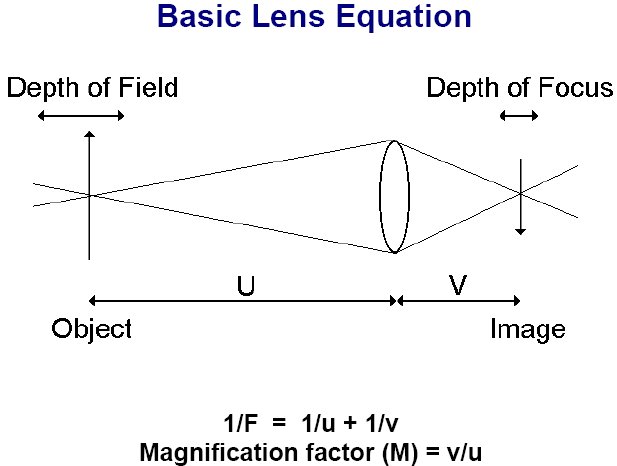
Terms like focal length, the use of the basic lens equation, lens power and finding the correct lens suitable for the image that you want, polarising filters and the use of light in image design are key aspects in machine vision that have relevance on the Physics Leaving Certificate course.
Lens Terminology
There are two types of lens
- Converging - brings the light rays together
- Diverging - spreads out the rays of light
When parallel rays of light are refracted by a converging lens, they converge, come together, and pass through a fixed point called the principal focus. A converging lens has a real focus point since the rays of light all pass through this point.
The focal length of a lens is the distance from the centre of the lens to the principal focus.
Lens formulae
Magnification is the image size compared to the object size.
1/u + 1/v = 1/f
|
u = object distance; v = image distance; f = focal length |
|
|
distances are always measured to or from the centre of the lens |
|
|
distances from objects and real images are positive in value |
|
|
distances from virtual images are negative in value. |
|
|
magnification = image size / object size. |

These formula are important in machine Vision in the finding a suitable lens for the object you want an image of.
Polarisation
Light travels in waves. When these light waves are polarised the vibrations occur in one plan only. Light from an ordinary source, for example the sun or a light bulb, the light is not polarised as the vibrations occur in all possible directions perpendicular to the direction in which the light is travelling.
In machine vision
filters are used to absorb any unwanted visual information before it
reaches the image sensor. Correct use of filters can help to
simplify the image processing. The use of polarising filters
reduces the specular reflection. In the same way, polarising
sunglasses polarise the light in order to reduce the glare of the sun.